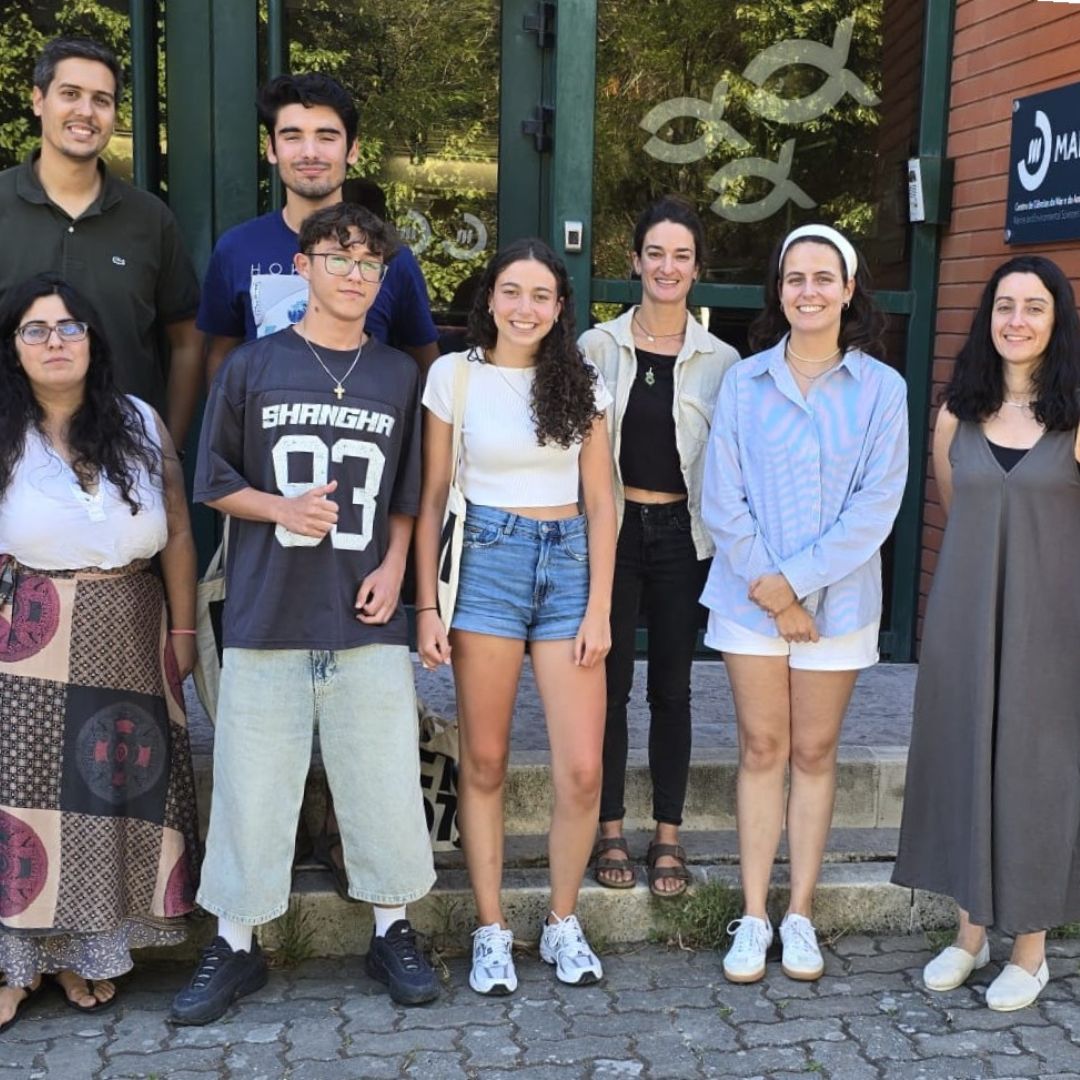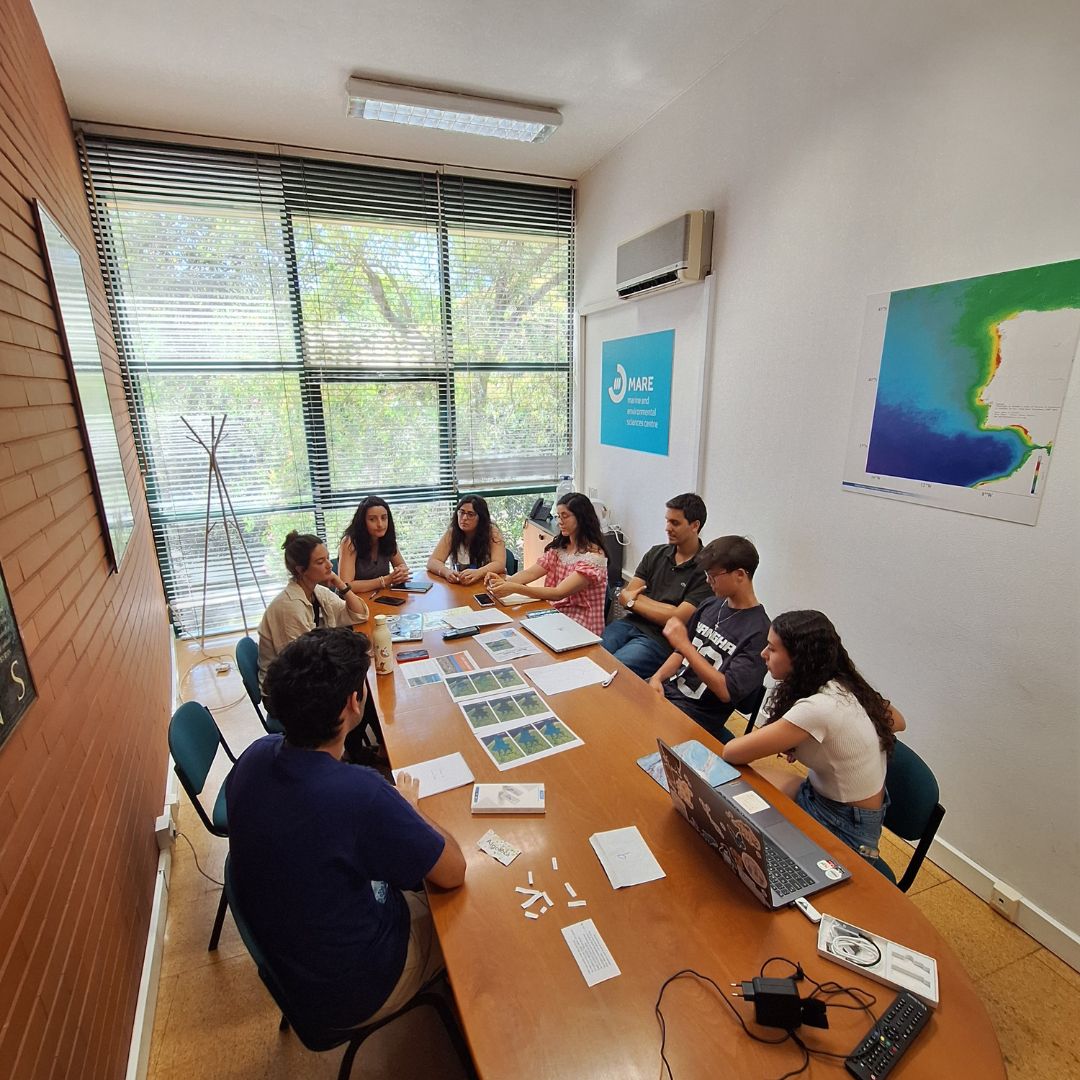MARE challenges young people to explore marine sciences as part of the Ciência Viva no Laboratório program
Between July 21 and 25, 2025, MARE (ARNET) in CIÊNCIAS, as part of the Ciência Viva no Laboratório program, welcomed a group of high school students for a week-long scientific internship dedicated to the theme “What does the color of the sea tell us?”
Guided by a team of researchers from the Phytoplankton and Remote Sensing group, participants had direct contact with scientific work carried out in coastal and laboratory environments.
The week began with an introduction to the team and a tour of the laboratories and scientific equipment available, followed by a field trip to the Sado estuary, where they collected water and phytoplankton samples and measured the color of the ocean using a radiometer.
Back in the laboratory, the students analyzed the samples collected and observed them under a microscope. They also learned how to access and interpret satellite data, subsequently relating it to the measurements obtained in the field. The students also visited the Algoteca, where they learned about emblematic microalgae species from the Portuguese coast, including toxic species.
At the end of the week, they put their acquired knowledge into practice by taking on the role of researchers in a case study that simulated sudden changes in the color of the sea due to illegal discharges.
“It was an intense week full of discoveries in which the students were able to experience the daily life of a scientist,” said Afonso Ferreira, one of the researchers who welcomed the young participants, who also highlighted the importance of direct contact with science and the real challenges of studying the oceans.

The main objective of this internship was to bring students closer to scientific research and promote critical thinking through the exploration of techniques for analyzing ocean color, phytoplankton, and remote sensing.
The activity took place at the Faculty of Sciences of the University of Lisbon, under the coordination of MARE professor and researcher Ana Brito, with the support of a multidisciplinary team composed of Afonso Ferreira, Beatriz Biguino, Giulia Sent, Joana Cruz, and Sofia Nunes.
At the same time, in Peniche, researchers from MARE-IPLeiria also welcomed nine middle and high school students for a week, also as part of the Ciência Viva no Laboratório program. This internship focused on the bioactive potential of natural marine products for various purposes, as well as the sustainable use of marine resources in food. Throughout the week, participants carried out activities together with researchers, having direct contact with the applied science developed at MARE-IPLeiria.
Both internships reinforce the fundamental role of the Ciência Viva no Laboratório program in bringing young people closer to science, allowing them a unique experience of immersion in research projects related to the sea and its countless challenges.
Text by Afonso Ferreira, Patrícia Carvalho, and Vera Sequeira
